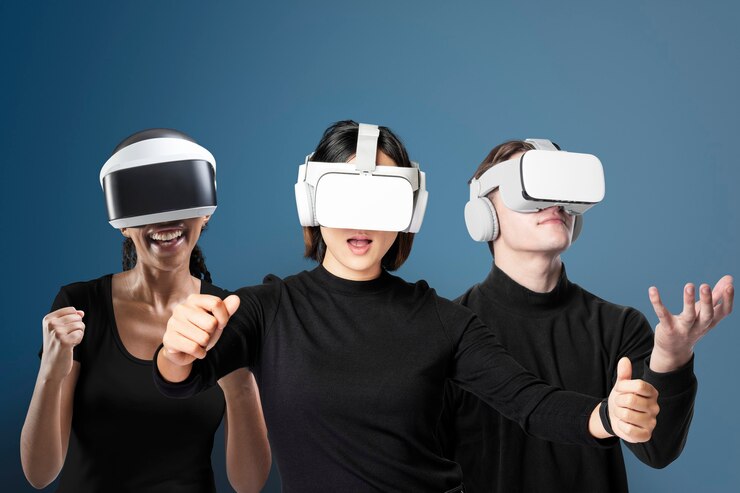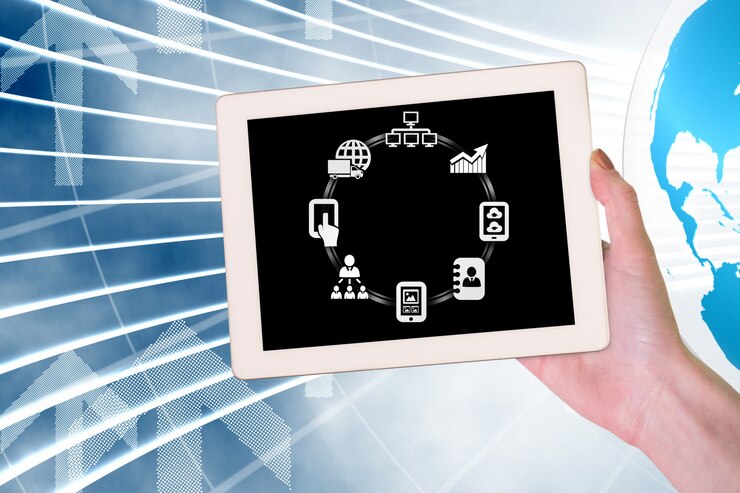Virtual Reality (VR) and Augmented Reality (AR) are no longer distant dreams confined to science fiction. These groundbreaking technologies are steadily transforming how we interact with the digital and physical worlds. From revolutionizing entertainment and gaming to redefining healthcare, education, and business, VR and AR are poised to become an integral part of our daily lives. As technology advances, these immersive experiences will continue to push boundaries, unlocking new possibilities across multiple industries.
VR vs. AR: Understanding the Difference
- Virtual Reality (VR): This technology immerses users in a fully digital environment, blocking out the real world. VR headsets, gloves, and motion controllers enable users to explore and interact with artificial landscapes, making them feel as if they have stepped into another realm.
- Augmented Reality (AR): AR enhances the real world by overlaying digital elements onto physical surroundings. Unlike VR, which replaces reality, AR enriches it through devices such as smartphones, AR glasses, and even smart contact lenses, merging virtual content with tangible spaces.
Emerging Trends in VR & AR
1. Hyper-Realistic and Immersive Experiences
Cutting-edge advancements in AI, high-resolution displays, and haptic feedback are making VR and AR more lifelike. The future promises ultra-realistic graphics, seamless tracking, and enhanced sensory feedback, leading to a deeper level of immersion in digital experiences.
2. Revolutionizing the Gaming and Entertainment Industry
The gaming sector has already embraced VR and AR, but the future will bring more interactive storytelling, lifelike avatars, and expansive virtual worlds. With metaverse development on the rise, users will engage in shared digital environments for gaming, concerts, and even virtual tourism.
3. Transforming Education and Training
VR and AR are reshaping how we learn and train. Medical students can practice complex surgeries in a risk-free VR environment, while AR enhances traditional learning by providing interactive 3D models. Businesses are also leveraging these technologies for employee training in industries such as aviation, engineering, and healthcare.
4. Enhancing Remote Work and Collaboration
As remote work becomes the norm, VR and AR will enable employees to interact in virtual office spaces. Instead of video calls, team members will meet in digital boardrooms, work on 3D projects together, and communicate through realistic avatars, bridging the gap between physical and remote workspaces.
5. Healthcare and Therapy Innovations
The medical field is experiencing a VR and AR revolution. From virtual therapy for mental health to AR-assisted surgeries, these technologies are providing doctors and patients with powerful tools for diagnosis, treatment, and rehabilitation.
6. Retail and E-Commerce Transformation
The future of shopping is interactive. AR-powered virtual try-ons allow customers to preview clothing, accessories, and even home furniture before purchasing. VR shopping malls may soon enable users to browse and buy products in fully immersive digital stores.
7. The Rise of AR Glasses and Wearables
Smartphones will eventually take a backseat as AR glasses and wearable devices become the primary tools for augmented interactions. These lightweight devices will seamlessly integrate digital information into daily life, making navigation, work, and social interactions more intuitive.
Challenges and Roadblocks
Despite their potential, VR and AR face several obstacles:
- High Development Costs: Creating advanced VR/AR content and devices is expensive.
- Hardware Limitations: Bulky headsets and limited battery life hinder widespread adoption.
- Motion Sickness and Eye Strain: Some users experience discomfort when using VR for extended periods.
- Data Privacy Concerns: The collection and processing of real-world data raise security issues.
The Future Outlook
As technology progresses, these challenges will be addressed through innovation and improved infrastructure. With 5G networks, AI-driven optimizations, and compact hardware, VR and AR will become more accessible and practical. Whether in business, entertainment, healthcare, or education, these technologies are set to reshape our world, bringing us closer to a future where digital and physical realities seamlessly merge.
The future of VR and AR is not just an evolution—it’s a revolution. Are you ready to embrace it



